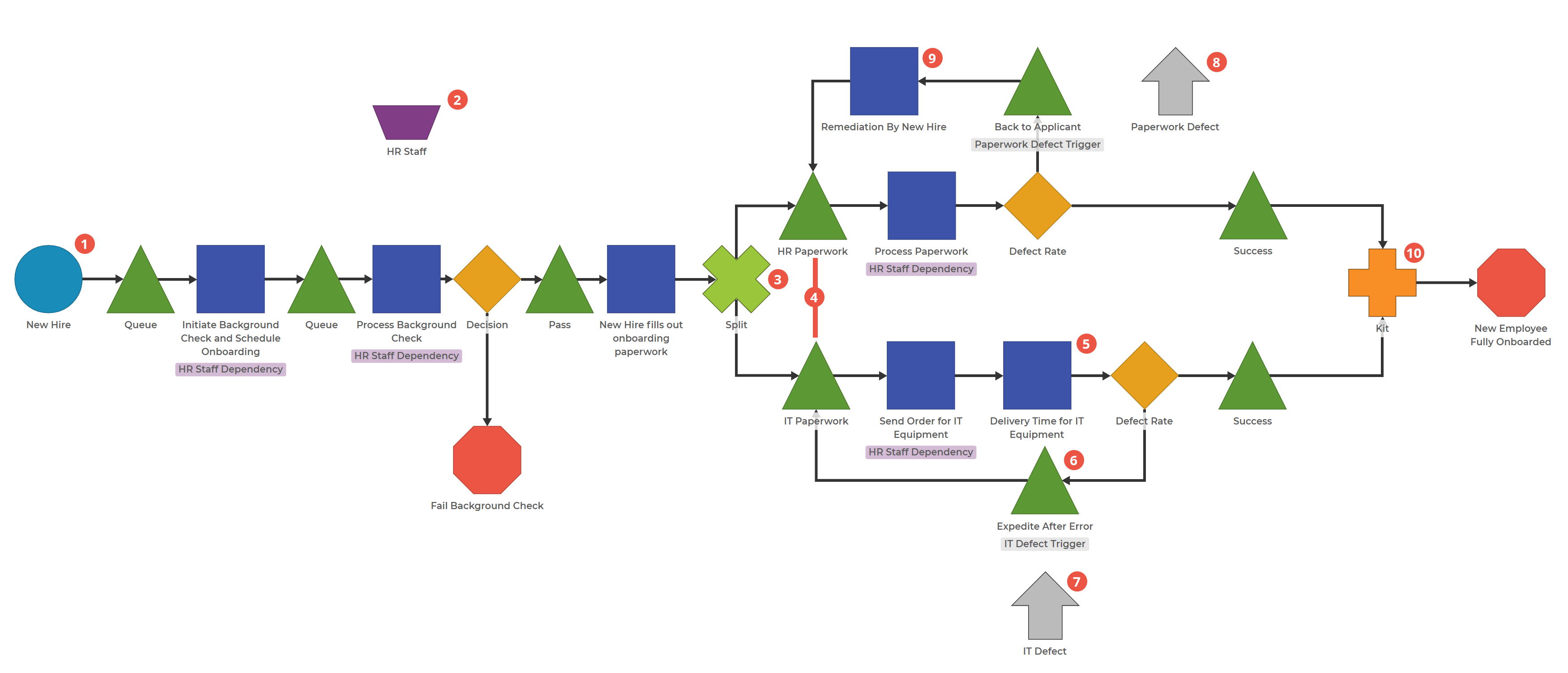Onboarding New Hires
Onboarding New Hires. This process highlights simultaneous activities, recombining the same pieces after a Split and labeling items that go through certain areas of a process.

0. There are three items in this model: New Hire, HR Paperwork, and IT Request. A New Hire consists of 1 HR Paperwork and 1 IT Request.
1. New Hires are generated here. After going through the Interview Process (see last week's model), a collection of New Hires are "demanding" the next phase of the process. You can set this arrival time at a rate similar to the completion rate of the interview process.
2. Staff certain activities by using the Resource Block. Given a limited amount of staff, you'll want to ensure a realistic timeframe by having the correct number of staff performing the appropriate activities.
3. After going through a common process, simulate the start of concurrent processes. Because the New Hire item type contains other item types, the Split Block will separate it into individual items of those other types. In this case, we kick off an HR Paperwork and IT Request process. In addition, the Split Block contains a parameter called "Maintain Match on Kit," which is turned on. This action will allow the split items to come back together with the specific item it split from.
4. Ensure the items go on different paths by turning off "Allow All Items." Each of these blocks has parameters for either the HR Paperwork or IT Request item, effectively cutting each item off from the other path.
5. Modeling Wait Time as Activity. Sometimes, Wait Time is a function of an item waiting for other parts of the process to happen, as in the Queue Block. However, sometimes your process has a built-in waiting time while another actor does work. Simulate this time as an Activity Block instead.
6. Set the Priority on Expedite After Error to move this request ahead of the others. Setting the Priority to 1 (first priority) will jump the IT Request that goes through this block to the front of every other block it encounters. So, when there's an issue with an IT request, you can ensure that those requests are handled first.
7. Label IT Defects. When an IT Request is sent back around, we'll use an Accumulator Block to "add" 1 to the item. Then, in the Item Report, we can look at the items that looped back around by finding which ones have 1s.
8. Label Paperwork Defects. Similar to the IT Defects, we will add an Accumulator Block to "add" 1 to the item with a Paperwork Defect.
9. Model the full-time with this block, not just the activity itself. While Remediation by the individual might only be a short time, there may be some delays between when it gets sent to the New Hire and when it actually comes back. The Activity Block can represent this entire time.
10. Put the completed Paperwork and the IT Request back together. For this process, we will Kit them back together to get the data for each New Hire. This means that "Match Items" needs to be turned on here as well, which will only Kit together the items that were originally Split from each other.
This process highlights several features and different blocks. This model's wide variety of shapes and their unique parameters emphasize how you could make this process a digital twin of reality.
Was this helpful?
